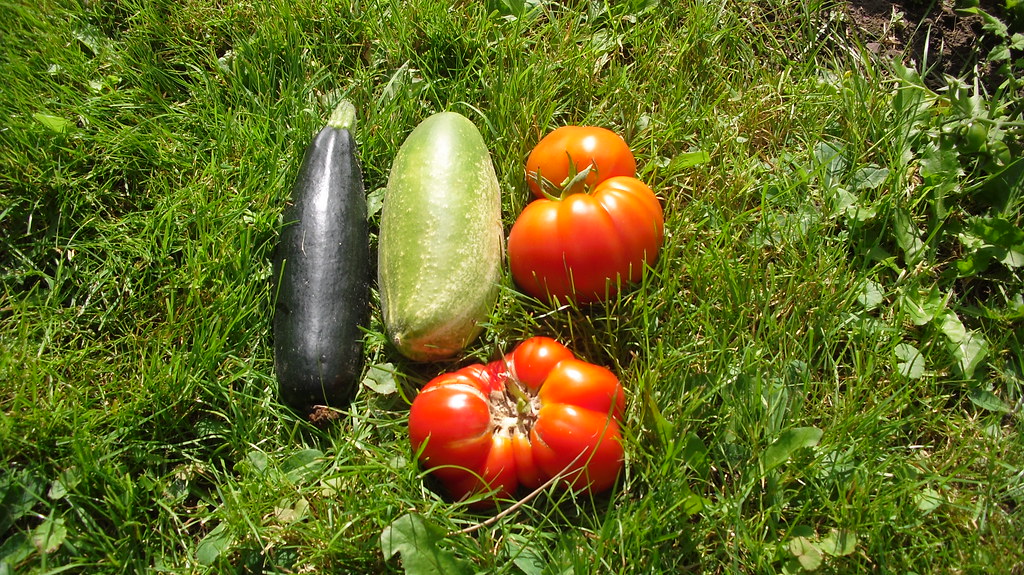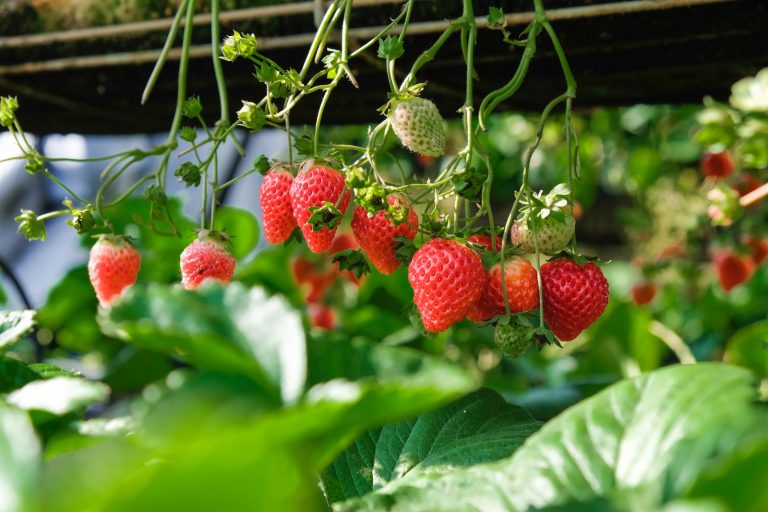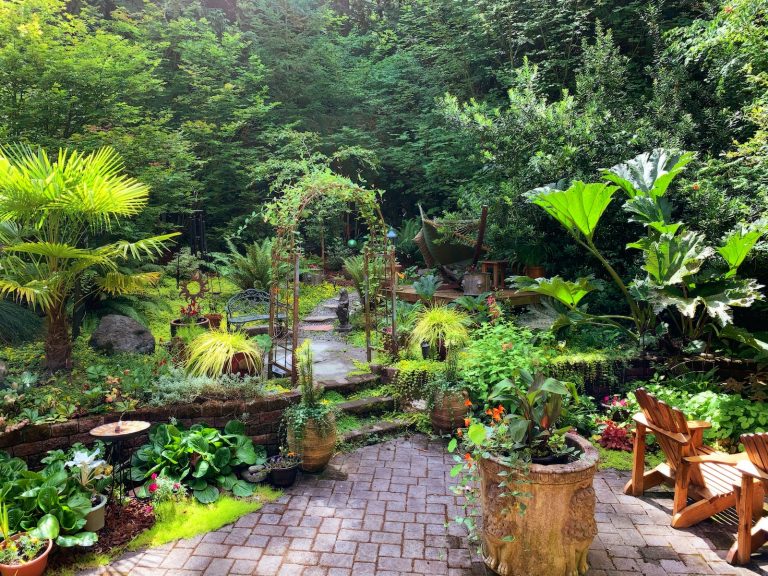How to Create a Vegetable Garden on a Budget?

Welcome to the world of gardening! There’s nothing like the joy of growing and harvesting your own vegetables. However, creating a vegetable garden can be expensive, especially if you’re starting from scratch.
But don’t worry, with a little creativity and some smart planning, you can create a bountiful veggie patch without breaking the bank. In this post, we’ll share some practical tips on how to create a vegetable garden on a budget so that you too can enjoy an abundant harvest of fresh produce all season long. Let’s get started!
Benefits of Growing Your Own Vegetables
There are plenty of benefits that come along with growing your own vegetables. For one, you have complete control over what goes into your food. This means you can avoid harmful pesticides and chemicals, and instead opt for organic methods of growing. Not to mention, home-grown veggies simply taste better!
Another benefit is that it can save you money in the long run. Once you’ve invested in some quality gardening supplies, you won’t have to keep buying fresh produce from the store. You can grow as much or as little as you want, depending on your personal needs and budget.
Finally, gardening is a great way to get outside and enjoy some fresh air. It’s a relaxing hobby that can provide you with beautiful (and nutritious!) results.
Types of Vegetables to Grow
There are many different types of vegetables that you can grow in your garden, and the best type for you to grow will depend on a number of different factors. If you are growing a garden on a budget, it is important to consider what types of vegetables are less expensive to grow. Here are a few of the best types of vegetables to grow on abudget:
–Potatoes: Potatoes are a great vegetable to grow on a budget because they are relatively inexpensive to purchase and they yield a large amount of food. You can grow potatoes in a variety of ways, including in raised beds, in containers, or directly in the ground.
–Tomatoes: Tomatoes are another great option for those looking to save money on their vegetable garden. Tomatoes can be grown in a variety of ways, including in raised beds, in containers, or directly in the ground. They can also be purchased as plants from most nurseries or home improvement stores.
–Peppers: Peppers are a versatile vegetable that can be used in many different dishes. They can be grown in raised beds, containers, or directly in the ground. Peppers can also be purchased as plants from most nurseries or home improvement stores.
–Eggplants: Eggplants are another versatile vegetable that can be used in many different dishes. They can be grown in raised beds, containers, or directly in the ground. Eggplants can also be purchased as plants from most nurseries or home improvement stores.
–Carrots: Carrots are one of the easiest vegetables to grow, and they can be grown directly in the ground, in raised beds, or in containers. Carrots can also be purchased as plants from most nurseries or home improvement stores.
Budget Gardening Tips
- Plan your garden. Decide what vegetables you want to grow, how much space you have to work with, and what kind of budget you’re working with. This will help you determine how many plants you need and what kind of materials you’ll need to purchase.
- Start small. Don’t try to grow too much at once or you’ll end up spending more money than necessary. Start with a few plants and expand your garden as your budget allows.
- Use recycled materials. If you have old tires or plastic containers lying around, put them to use as planters for your garden. You can also use newspapers or cardboard as mulch to help reduce weeds and conserve moisture.
- Buy in bulk. Seeds and seedlings are often cheaper when purchased in larger quantities. The same goes for soil, fertilizer, and other gardening supplies. Buying in bulk will save you money in the long run.
- Shop around for deals . Compare prices at different stores before making any purchases. You may be able to find better deals online or at local gardening nurseries.
By following these tips, you can create a beautiful vegetable garden without breaking the bank!
Supplies Needed and Equipment Needed for a Vegetable Garden
To grow your own vegetables, you’ll need some basic supplies and equipment. You can find most of what you need second-hand or even for free, if you’re willing to search around a bit. Here’s a list of what you’ll need to get started:
- A plot of land to grow your vegetables in. If you don’t have a backyard, you can look into community gardens in your area.
- Seeds or seedlings to plant. You can save money by starting your own seeds indoors, but it’s not necessary.
- Fertilizer and compost. You can make your own compost using kitchen scraps and leaves, or buy it from a garden center.
- Watering cans or a hose with a sprinkler attachment.
- Gardening tools like spades, hoes, and rakes. Again, you can often find these second-hand.
Preparing the Soil for Planting
When you are ready to plant your garden, the first step is to prepare the soil. This can be done by tilling the soil with a shovel or rototiller. You want to loosen the soil so that the roots of your plants can easily penetrate it. You also want to remove any rocks or debris that might be in the way.
If you have never Gardened before it’s recommended that you test your soil before planting. This can be done with a simple soil test kit which you can purchase at most hardware stores. Once you know what type of nutrients are lacking in your soil, you can add them accordingly. This will ensure that your plants have everything they need to thrive.
Assuming you have all the necessary tools and supplies, preparing the soil for planting is relatively straightforward. Simply till the soil to loosen it, remove any rocks or debris, and make sure it is well-nourished with correct levels of essential nutrients. With a little bit of preparation, you will be on your way to a bountiful harvest!
Easy to Grow Vegetable Varieties
There are many different vegetables that you can grow in your garden, but some are easier to grow than others. If you are looking for easy to grow vegetable varieties, here are a few that you may want to consider:
- Beans: Beans are a great option for easy to grow vegetables. They can be grown in a variety of ways, including in containers, and they do not require a lot of care.
- Cucumbers: Cucumbers are another easy to grow vegetable. They can be grown in both containers and in the ground, and they do not require a lot of care.
- tomatoes: Tomatoes are another easy to grow vegetable. They can be grown in both containers and in the ground, and they do not require a lot of care.
Tips and Tricks to Maximize Your Garden Harvest
The tips and tricks to maximize your garden harvest are vast and varied. However, there are a few key things that you can do to ensure a bountiful crop.
First and foremost, it is important to choose the right location for your garden. Make sure you have plenty of space and the right amount of sunlight. Additionally, the soil should be rich and well-drained.
Once you have found the perfect spot, it is time to start planting. Be sure to select the right plants for your climate and space constraints. Research which vegetables grow best in your area and when they should be planted.
When it comes time to harvest your crops, be patient! Each plant has its own timeline, so don’t be too eager to reap the rewards. Once they are ready, however, carefully remove them from the ground being mindful not to damage the roots or stems.
With these tips in mind, you are well on your way to growing a healthy and bountiful garden!
Conclusion
A vegetable garden can be a great way to have access to fresh, healthy produce right at your fingertips. Even if you are limited by budget constraints, it is possible to create a simple yet effective vegetable garden that will serve you for years to come.
By keeping an eye on prices in your local hardware store and through the savvy use of creative solutions such as using recycled materials instead of buying new ones, you’ll be able to make do with what you have and still achieve the desired results. With careful planning and smart shopping strategies, anyone can enjoy their own mini-farm without having to spend too much money upfront.
James is a passionate writer and gardener with years of experience in home gardening. He is the author of several articles and blog posts on HomeGardenBlog.com, a platform where he shares his expertise and love for plants and gardening with the world.






